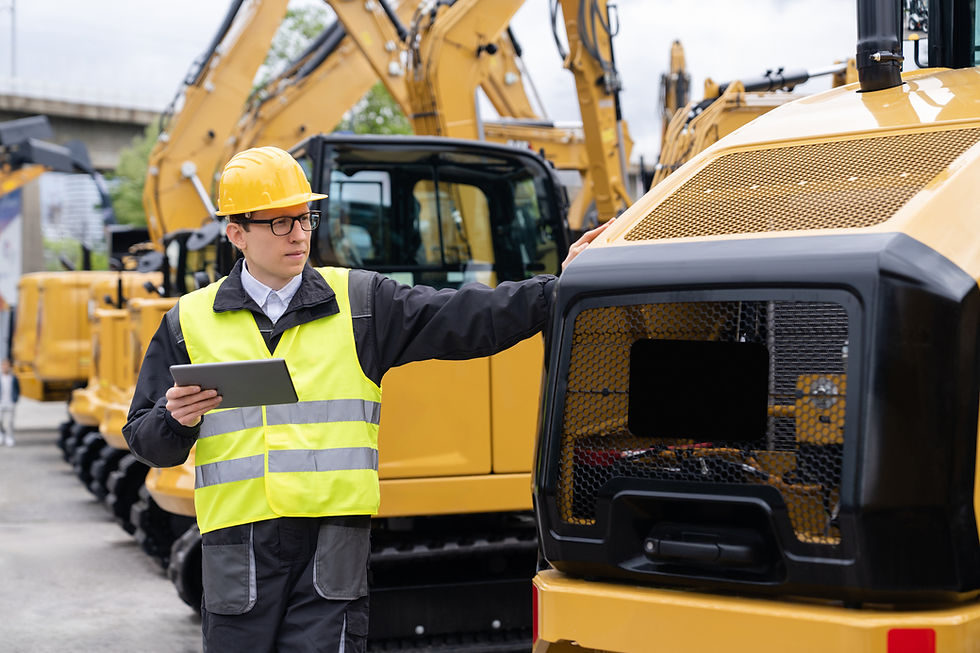Digital Self-Service: The Key to Staying Competitive in Today's Digital-First World
- GenAlpha Technologies

- Feb 19, 2023
- 3 min read
Updated: May 5, 2023
The most important reason original equipment manufacturers (OEMs) need to implement digital self-service technologies now is because we live in an increasingly digital native world, and this shift is quickly changing customer expectations and the way they want to do business.
According to a recent report by Gartner, "Digital-native expectations will influence every industry, and OEMs that ignore them will be left behind."
In order to stay competitive and meet the expectations of your customers, OEMs, you must implement digital self-service solutions that provide convenient, accessible, and efficient information to your customers.
So what do we mean when we talk about digital natives and living in a digital native world?
To explain this it’s crucial to understand the differences between a digital native and a native analog. A digital native (or person born after 1995) is typically defined as someone born after the widespread adoption of digital technologies, such as the internet and mobile devices. This means that they have grown up with technology as a part of their daily lives and may be more comfortable using digital tools for a variety of purposes.
A native analog (sometimes called a digital immigrant and a person born before 1995) is someone who was born before the widespread adoption of digital technologies. They may have had to adapt to using new technologies as they were developed rather than growing up with them as a part of their daily lives.
Please note these terms are not concrete, and there are many factors that can influence how comfortable someone is with using technology, such as access to digital tools, education level, and personal preferences. Generally speaking, these terms help us to understand the changes we are experiencing in the world today.
If we think about the rise of digital natives, we can use various examples to illustrate how a digital native may behave differently from a native analog. As an OEM, we encourage you to think about how you’ve changed your business to adapt to these new behaviors:
Shopping habits: Digital natives are more likely to shop online, using their smartphones and other digital devices to research and identify the right products, compare prices, and make purchases. Native analogs, on the other hand, may prefer to shop in a physical dealership or depot and use printed manuals or brochures to research products.
Communication: Digital natives are more likely to communicate via digital channels, such as social media, instant messaging, and email. They also prefer short-form content, such as memes and emojis, over longer-form written communication. Native analogs, by contrast, may prefer face-to-face conversations, phone calls, or even written cards and letters.
Education: Digital natives often learn differently from analog natives, using digital tools like online courses and interactive educational software. They may also be more comfortable with self-directed learning and less reliant on traditional lecture-style instruction. Analog natives may prefer a more structured, teacher-led approach to education.
Work style: Digital natives often have a different work style, favoring remote work, flexible schedules, and digital collaboration tools (Slack, Zoom, Teams, etc.). They may also be more comfortable with a less hierarchical work environment and less formal communication. Native analogs may prefer a more structured in-person work environment with clear hierarchies and more formal communication.
News consumption: Digital natives often get their news from online sources, such as social media and news websites, and are more likely to fact-check and verify the information before sharing it. Native analogs may be more likely to get their news from traditional print media and may be less skeptical of the information they encounter.
Entertainment: Digital natives consume entertainment differently from analog natives, often streaming movies and music online. They also tend to prefer short-form content, such as YouTube videos and social media stories, over longer-form content, like feature films or albums.
One example of how the world has become increasingly digital is the widespread adoption of smartphones and mobile devices. According to a report by Pew Research Center, 85% of adults in the United States now own a smartphone. This figure is even higher among younger generations, with 96% of adults aged 18-29 owning a smartphone. The adopted use of smartphones and other mobile devices has fundamentally changed how people interact with each other, with businesses, and with the world around them.
These are just a few examples, but they illustrate how the rise of digital natives has transformed consumer behavior, workplace culture, and even how we learn and communicate. They also demonstrate that if you don’t adopt some of these new ways of doing business, you will exclude a growing population of customers and employees.
Digital self-service solutions are essential for OEMs in today's digital native world. It’s more important than ever to implement these solutions now.
If you’re looking for help getting started with your digital self-service tools,you can contact one of our experienced experts. Or you can get a firsthand look at how powerful our solution, Equip360, can be for your business by scheduling a free demo.


